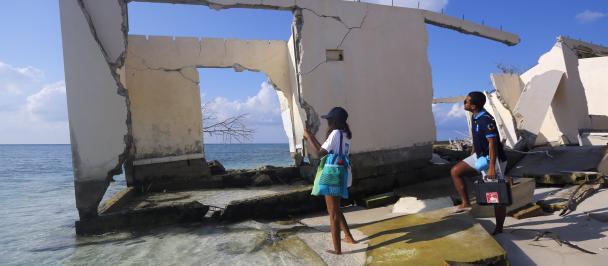Recently in New York the international community presented a set of key initiatives that should transform the way in which our changing climate is tackled, from energy to transportation, social welfare to exclusion, education to health. One of the critical areas is the role of the insurance industry; working with the development community to both protect and invest in development. A target of 500 million additional beneficiaries of climate risk insurance by 2025 was committed to by both insurance and development community alike.
There is much to do to reach such an ambitious target. The protection gap, for example, the distance between what is insured and what is not, in developing countries is 95 percent, compared to 50 percent in developed countries. Africa is of particular concern here, with just 1.2 percent of all global insurance premiums in the continent, and where South Africa counts for four out of every five dollars of premium written south of the Sahara. In Asia Pacific there are significant protection gaps as well, with the gross written premiums as a percentage of per capita GDP less than five percent in India, Indonesia, China and Malaysia, far below rates in Hong Kong, Singapore and Korea. The protection gap for healthcare is also particularly worrying in Asia, with a modelled exposure of US$1.8 trillion. Every year, approximately 100 million people, mostly in low-income countries, fall into poverty due to healthcare costs.
The reasons for these significant gaps are many, and often related. Legislative environments are often inadequate or non-existent; it is estimated just under half of all developing countries have no legislation for micro-insurance, which targets the most vulnerable. Institutional capacity remains weak in many countries, with a lack of finances to invest in adequate regulatory and management agencies for insurance. Financial inclusion, the connection of individuals and families to the financial system and its products, is not comprehensive, with 37 percent of adults in developing countries without access. That figure is 46 percent for women. And of course, insurance and risk financing, perhaps of all investments a country may make, often suffers from adverse political economy, with politicians sometimes guilty of prioritizing short-term highly visible investments over long-term asset protection.
These are not insurmountable problems however, and much has been done to tackle these issues, especially since the creation of the Insurance Development Forum and InsuResilience Global Partnership, network initiatives that have brought together insurance and development actors, national and international, public and private, to deliver that 500 million beneficiary target. Insurance and risk finance products are increasingly tailored to specific contexts, and targeting critical sectors relevant to each country. Working with aggregators, such as re-insurers, can influence whole countries far more comprehensively and faster than just with distributors. The integration of insurance and risk financing into development is still in its infancy, with much progress to be made from ensuring these issues are adequately represented in a country’s Paris Agreement commitments, National Adaptation Plans, Vertical Fund Allocations, Post-Disaster Needs Assessments, and much more. And finally, the integration into broad development, where insurance and risk financing are part and parcel of development planning and implementation, and public financial management, is increasingly what the long-term and long-lasting vision of collaboration looks like.
UNDP welcomes a major contribution from BMZ on both inclusive insurance and risk financing, to be developed and delivered in partnership with the Insurance Development Forum. This financing, which will start in 2020, will allow UNDP to roll-out its first-ever strategy for insurance and risk financing, and implement it in at least 20 countries, on everything from market transformation to legislative reform, product development to distribution, evidence and research to innovation financing. It will enable us to reach five million people through inclusive insurance and it will allow UNDP to collaborate more with the insurance industry than ever before, providing the foundations for more that US$5 billion in private sector risk financing. This will help UNDP play its part in delivering the 'sustainable' part of the SDGs.

 Locations
Locations
